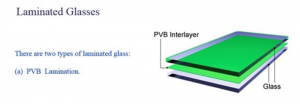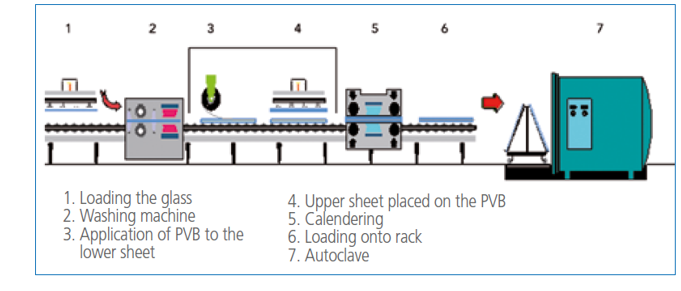Laminated glass
Laminated glass is produced by adhesion of a special talc (PVB) between two or more glass pieces under the heating and the pressure process and bonding them together to create a product with flat glass or curved glass. The type of glass used to make laminated glass can be ordinary glass, Tempered glass, colored glass, flute glass, and so on. For double-layer laminated glass, the common thickness is 3 + 3, 4 + 4, and 6 + 6 mm. These glasses have good transparency and their impact resistance is several times higher than ordinary glass. Hence, they are used in the security glasses. Due to the PVB high adhesion properties, in case of Breakage, the broken pars remain on PVB layer and do not fall. PVB absorbs a large amount of impact energy and quickly disperses it across its surface. In this way, the safety of humans inside and outside the building is maintained. One of the important factors to assess modern residential buildings is Sound insulation. Laminated glass with a layered interior can prevent the sound wave and maintain a relaxed and comfortable environment. The special function of these glasses is to prevent the UV rays of the sun. In residential homes, due to the passage of UV rays through glasses, expensive items such as carpets, furniture, and artworks pale over time. High-performance laminated glass blocks about 99% of UV rays. It is while passing the most visible light.
Other properties
- Durability
- Long lifespan
- Flexible design and easy installation
- Resistant to heat and moisture
- High performance and multi-purpose
- More protection against natural and unnatural disasters
One of the most important steps in the production of laminated glass is the complete evacuation of air bubbles between the layers of glass and Talc. If this step is not completely and accurately implemented, the glass layers and Talc will be separated over time. The Almas Shisha Jahan Nama Company prevent this phenomenon and guarantee its glass for 15 years using the most equipped autoclave machine in its laminated glass production line, as well as using the PVB internal layer with Grade A in the laminated glass production process.

Laminated process

